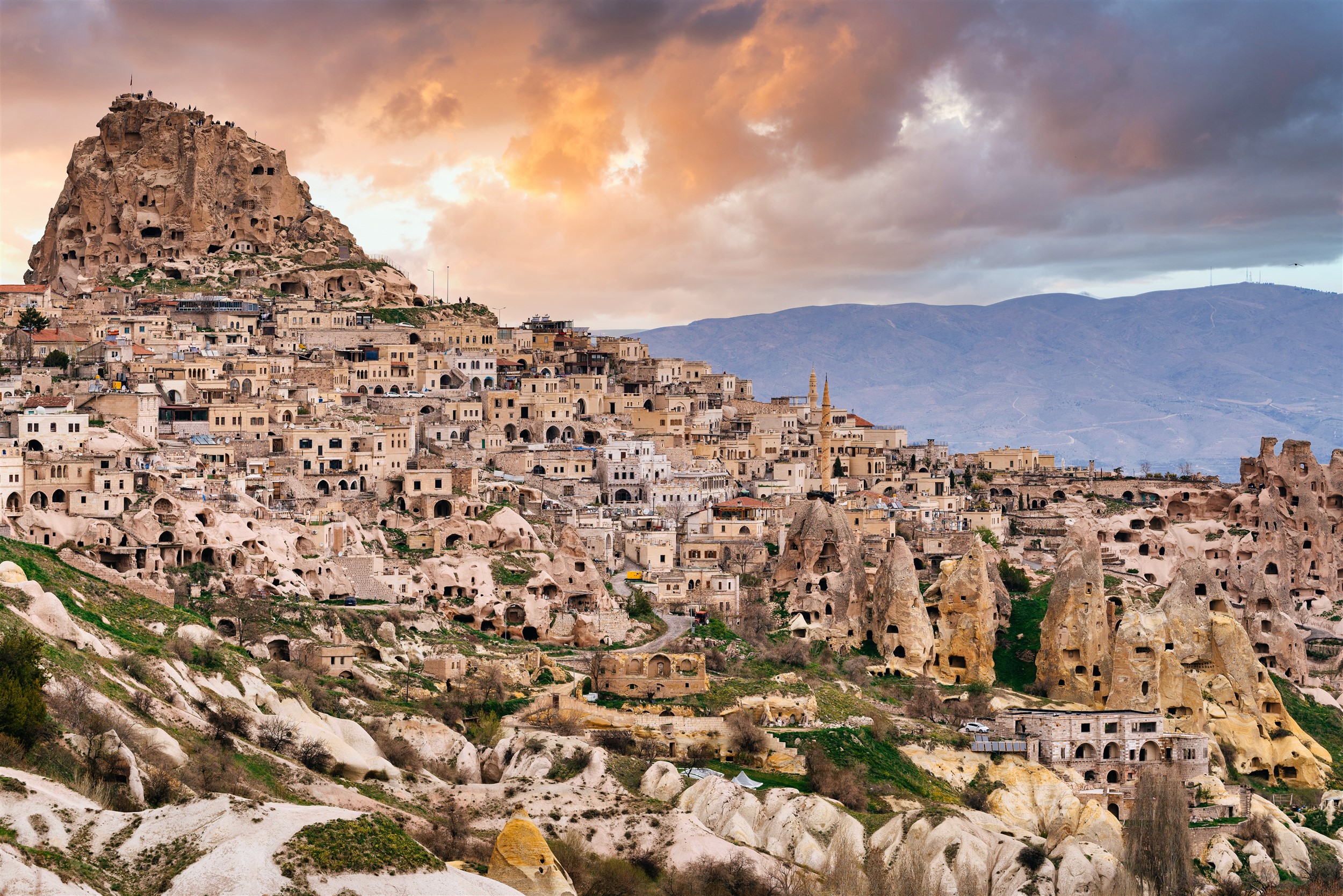Central Turkey's Göreme National Park and the Rock Sites of Cappadocia are designated UNESCO World Heritage Sites. The park, which spans an area of more than 9000 hectares, features an unusual landscape of rock formations called "fairy chimneys," along with historic cave homes and churches.
Throughout millions of years, volcanic eruptions, followed by erosion and weathering, developed the region's unique geological features. The "fairy chimneys" are towering, conical rock formations that have undergone strange shaping by wind and water, some of which resemble mushrooms, cones, or even figures.
A collection of historic cave houses, some of which date back to the fourth century AD, may be found in the park. The area was originally populated by early Christian communities that excavated a network of tunnels and cities right into the soft volcanic tuff for their houses, churches, and monasteries.
The history and significance of the area, particularly its function as an early Christian center and its significance as a trading route between the East and the West, might be covered in a blog about Göreme National Park and the Rock Sites of Cappadocia. The blog may also offer helpful hints for tourists, such the ideal times to go, how to tour the park and all of its attractions, and where to discover the best vistas and photo shoots.
The blog may also explore the area's rich cultural and aesthetic legacy, including its traditional handicrafts like pottery and carpet weaving as well as its regional food and drink. The site might also feature some of the area's less-traveled-to activities, such hot air balloon rides, hiking and biking excursions, and trips to nearby farms and wineries.




